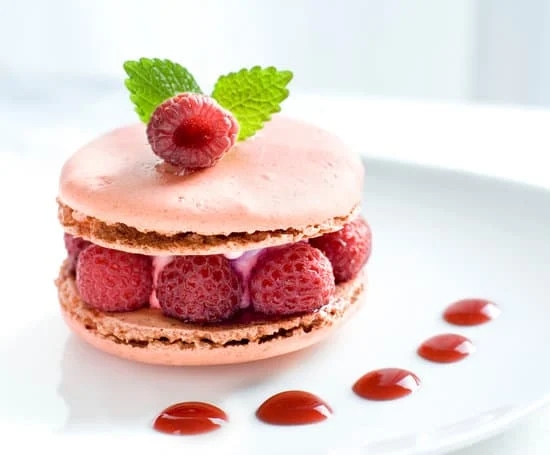Are you looking to elevate your cake decorating game with fresh fruits? Learn how to prepare fruit for cake decorating in this comprehensive guide. Using fresh fruits can add a burst of color, flavor, and freshness to your cake creations, creating a visually stunning and delicious masterpiece that will impress your guests.
When it comes to selecting the right fruits for cake decorating, it is essential to consider factors such as color, texture, and flavor compatibility with the cake. The vibrant hues of strawberries, the tropical appeal of kiwis, or the citrus zing of oranges can all enhance the overall presentation of your cake. By choosing the best fruits that complement your cake’s flavor profile, you can create a harmonious and visually appealing decoration.
Properly washing and cleaning fruits before using them for decorating is key to ensuring food safety and hygiene. In this guide, we will provide you with step-by-step instructions on how to wash and clean fruits effectively to remove any dirt, pesticides, or bacteria. By following these techniques, you can enjoy fresh and safe fruit decorations on your cakes without compromising on quality or taste.
Selecting the Right Fruits
When it comes to decorating cakes with fresh fruits, selecting the right fruits can make a significant difference in the overall presentation and taste of the final product. One of the key factors to consider when choosing fruits for cake decoration is their color.
Vibrant and contrasting colors can add visual appeal to the cake, making it more appetizing and aesthetically pleasing. For example, bright red strawberries can stand out against a white frosting or a yellow lemon zest can complement a lemon-flavored cake beautifully.
Texture is another important aspect to consider when selecting fruits for cake decorating. Some fruits may be too soft or juicy, which can make them difficult to work with as decorations. Opt for firmer fruits like kiwis or apples that hold their shape well when sliced or carved into different shapes.
Additionally, consider the flavor compatibility of the fruits with the cake itself. Choose fruits that complement the flavor profile of the cake rather than overpowering it. For instance, pairing citrus fruits like oranges or berries with a vanilla or chocolate cake can create a delicious combination.
In addition to color, texture, and flavor, it is crucial to ensure that the fruits you choose are ripe but not overripe. Overripe fruits may be too soft or mushy for decorating purposes and can affect the overall look and taste of the cake.
Before using any fruit for decoration, be sure to inspect them carefully for any bruises or blemishes that may detract from the appearance of the cake. By considering these factors when selecting fruits for cake decorating, you can elevate your creations and impress your guests with visually stunning and delicious treats.
Washing and Cleaning Fruits
When it comes to preparing fruits for cake decorating, one of the crucial steps is washing and cleaning them properly to ensure that they are safe to use and free from any contaminants. Here is a step-by-step guide on how to clean your fruits effectively before incorporating them into your cake decorations:
- Start by selecting fresh fruits that are ripe but firm, as these will hold up better when used as decorations on your cakes. Avoid using overripe or bruised fruits, as they may not look as visually appealing.
- Fill a clean sink or large bowl with lukewarm water and add a tablespoon of white vinegar. The acidity of the vinegar helps to remove any pesticides or bacteria present on the fruit’s surface.
- Gently submerge the fruits in the water-vinegar solution and allow them to soak for about 5-10 minutes. Use a soft brush or cloth to scrub the fruits gently, especially if they have a textured skin like berries or apples.
- Rinse the fruits thoroughly under running water to remove any remaining vinegar solution and debris. Pat them dry with a clean kitchen towel or paper towel before proceeding with peeling, slicing, or decorating your cakes.
Properly washing and cleaning your fruits ensures that you are using safe and fresh ingredients for decorating your cakes while also enhancing their appearance and taste. By following these simple steps, you can prepare your fruits effectively for cake decoration and create stunning edible masterpieces that will delight your friends and family.
| Steps | Description |
|---|---|
| Select Fresh Fruits | Choose ripe but firm fruits for better results. |
| Prepare Water-Vinegar Solution | Fill a sink with lukewarm water and vinegar. |
| Soak and Scrub Fruits | Submerge fruits in the solution, scrub gently, then rinse. |
Peeling and Slicing Techniques
When it comes to cake decorating, the way you prepare your fruits can make a big difference in the overall presentation of your creation. To achieve that perfect finish and add a touch of freshness, mastering the art of peeling and slicing different fruits is essential. Knowing how to slice fruits like strawberries, kiwis, and oranges can help you create beautiful decorations that will impress your guests.
One important tip when slicing fruits for cake decorating is to ensure that your cuts are precise and uniform. This will not only enhance the visual appeal of your cake but also ensure that the fruits are evenly distributed. For strawberries, consider cutting them into thin slices for a delicate design or into halves for a bolder look.
Kiwis can be peeled, then sliced or cut into decorative shapes like stars or hearts for a unique touch. Oranges can be segmented and arranged in patterns or used as individual slices to bring a burst of citrus flavor to your dessert.
To maintain the freshness and vibrant color of your fruits after slicing, consider dipping them in lemon juice or a mixture of water and honey. This simple step can help prevent browning and keep your fruit decorations looking picture-perfect until serving time. Experiment with different slicing techniques and shapes to find what works best for your cake design, whether you’re going for an elegant floral arrangement or a fun geometric pattern.
| Fruit | Recommended Slicing Technique |
|---|---|
| Strawberries | Thin slices for delicate designs |
| Kiwis | Peeled, then sliced or cut into decorative shapes |
| Oranges | Segmented and arranged in patterns or used as individual slices |
Mastering the art of peeling and slicing fruits for cake decorating may take some practice, but with patience and creativity, you can elevate your cakes to new heights. Remember to consider both aesthetics and taste when choosing how to prepare your fruit decorations – they should not only look good but also complement the flavors of the cake itself.
So next time you’re planning to decorate a cake with fresh fruits, put these techniques into practice and watch your creations come to life with vibrant colors and delicious flavors.
Preventing Fruits From Browning
When it comes to fruit decoration for cakes, preventing fruits from browning is crucial to maintain the aesthetic appeal of the final product. Apples and bananas are particularly prone to browning after being sliced, which can affect the overall appearance of the cake. One effective method to prevent this browning process is by using lemon juice. The acidity in lemon juice helps slow down the enzymatic browning process that occurs when fruits are exposed to oxygen.
Using Lemon Juice
To prevent apples and bananas from browning, simply toss the fruit slices in a bowl with some lemon juice. Make sure to coat all sides of the fruit slices evenly with the lemon juice to ensure maximum effectiveness. The citric acid in lemon juice not only adds a subtle tangy flavor to the fruit but also acts as a barrier against oxidation, keeping them looking fresh and vibrant.
Other Preservation Methods
In addition to using lemon juice, there are other preservation methods you can utilize to prevent fruits from browning. For example, you can submerge sliced fruits in a mixture of water and honey or sugar syrup before decorating your cake.
These sweet solutions not only help maintain the color of the fruits but also add a touch of sweetness that complements the cake’s flavor profile. Experiment with different preservation techniques to find what works best for your specific cake decorating needs.
Tips for Success
When working with fruits like apples and bananas for cake decoration, it’s essential to prepare them just before assembling or serving the cake. This will ensure that they remain fresh and colorful throughout the presentation.
Remember that prevention is key when it comes to preserving the visual appeal of your fruit decorations on cakes. By following these tips on how to prevent fruits from browning, you can elevate your cake decorating skills and create stunning desserts that are as beautiful as they are delicious.
Using Fruits as Garnish
When it comes to decorating cakes with fruits, the possibilities are endless. Fruits not only add a burst of color but also freshness and natural sweetness to any cake. Whether you’re looking to create an elegant design or a playful one, fruits can be used as edible garnishes to take your cake to the next level.
Here are some creative ideas on how to use fruits as garnishes for cake decorating:
- Fruit Flowers: Slice strawberries, peaches, or kiwis thinly and arrange them in overlapping layers on top of the cake in a circular pattern to create beautiful flower designs.
- Citrus Zest: Grate lemon, orange, or lime zest over frosted cakes for a vibrant pop of color and citrusy flavor. The zest adds a subtle yet refreshing touch to the overall presentation.
- Fruit Slices: Cut fruits like oranges or grapefruits into thin slices and place them around the edges of the cake for a decorative border. This simple technique adds a colorful touch without overpowering the flavors.
Incorporating fruits as garnishes doesn’t just enhance the visual appeal of the cake but also provides additional texture and taste elements. By experimenting with different fruit varieties and arrangement styles, you can elevate your cake decorating skills and impress your guests with a stunning masterpiece.
Remember, proper preparation is key when using fruits as edible decorations on cakes. Make sure to follow washing, cleaning, peeling, slicing techniques outlined earlier in this guide to ensure that your fruit garnishes not only look beautiful but are also safe for consumption. Experiment with different combinations and designs to find what works best for your individual creations.
Arranging Fruits on Cakes
When it comes to decorating cakes with fruits, the way you arrange them can make a significant impact on the overall look of the cake. Creatively arranging fruits not only adds color and freshness but also enhances the aesthetic appeal of the cake. Whether you’re looking to create fruit flowers, geometric patterns, or any other design, mastering the art of arranging fruits on cakes can take your cake decorating skills to a whole new level.
Here are some techniques for arranging fruits in visually appealing patterns or designs on cakes:
- Fruit Flowers: Create stunning flower designs using sliced fruits like strawberries, kiwis, and peaches. Layer the slices in a circular pattern to mimic the petals of a flower. Add blueberries or raspberries in the center for added details.
- Geometric Patterns: For a modern and sleek look, try arranging fruits in geometric shapes such as triangles, squares, or concentric circles. Use contrasting colors and sizes of fruits to create eye-catching patterns that stand out on the cake.
- Cascading Fruits: Arrange fruits in a cascading fashion along the sides of the cake for a beautiful waterfall effect. Start with larger slices at the top and gradually decrease the size towards the bottom for an elegant finish.
Mastering these fruit arrangement techniques requires practice and creativity. Experiment with different fruit combinations, patterns, and designs to discover what works best for your cakes. Remember that while aesthetics are essential, taste is equally important. Make sure that your fruit arrangements complement the flavor of the cake for a harmonious culinary experience.
Incorporating beautifully arranged fruits into your cake decorating repertoire can elevate your creations from ordinary to extraordinary. With these techniques in mind, you’ll be able to impress guests with visually stunning and delicious cakes that showcase your attention to detail and creativity. So next time you prepare fruit for cake decorating, put your artistic skills to use and watch as your edible masterpieces come to life.
Storing Leftover Fruits
When it comes to cake decorating, using fresh fruits can really elevate the overall presentation and taste of your creation. However, after you have finished decorating your cake with fruits, you may have some leftovers that need to be stored properly to maintain their freshness and prevent spoiling. Here are some tips on how to store leftover fruit decorations before serving the cake.
One important tip is to refrigerate any leftover fruit decorations promptly. Fruits are perishable and can quickly spoil if left out at room temperature for too long. By storing them in the refrigerator, you can help extend their shelf life and keep them fresh until you are ready to serve the cake.
Another helpful tip is to store different types of fruits separately. Some fruits produce ethylene gas, which can cause other fruits to ripen or spoil more quickly. By keeping different fruits separate, you can prevent them from affecting each other’s freshness and flavor. For example, berries should be stored separately from bananas or apples to avoid premature spoilage.
Lastly, consider using airtight containers or plastic wrap to cover and protect the leftover fruit decorations. This can help prevent exposure to air and moisture, which could lead to quicker deterioration. By following these simple tips on how to store leftover fruit decorations properly, you can ensure that your cake remains fresh and visually appealing when it is finally time to enjoy it.
Conclusion
In conclusion, mastering the art of fruit preparation for cake decorating can truly elevate the aesthetics and appeal of your creations. By following the steps outlined in this article, you can ensure that your fruits not only look stunning but also taste fresh and delicious on your cakes. From selecting the right fruits to washing, slicing, and arranging them creatively, each step plays a vital role in achieving a visually appealing and appetizing final product.
Understanding how to prepare fruit for cake decorating is not just about making your cakes look beautiful, but it also involves ensuring food safety and freshness. Properly cleaning and handling fruits before using them as decorations is crucial in preventing any contamination or spoilage that could affect the overall quality of your cake. Taking the time to peel, slice, arrange, and preserve fruits with care will undoubtedly make a difference in the outcome of your decorative efforts.
By incorporating fresh fruits into your cake designs as edible garnishes, you not only add color and vibrancy to your creations but also introduce natural flavors that complement the sweetness of the cake itself. Whether you choose to create intricate patterns or simple arrangements, the key lies in the attention to detail and precision in preparing the fruits.
So next time you embark on a cake decorating project, remember these essential tips on how to prepare fruit for cake decorating to achieve both visual appeal and gastronomic delight.
Frequently Asked Questions
How to Decorate Cake With Fresh Fruit?
Decorating a cake with fresh fruit can add both flavor and visual appeal to your creation. To start, ensure that the fruit is washed, dried, and cut into appropriate sizes for decorating.
Place the fruit strategically on top of the cake in a visually pleasing arrangement. You can also brush the fruit with a glaze to keep it looking fresh for longer.
How Do You Preserve Fruit for Cake Decorating?
Preserving fruit for cake decorating involves several steps to ensure that the fruit remains fresh and vibrant on your cake. One method is to lightly coat the fruit with lemon juice to prevent browning.
You can also store cut fruits in an airtight container in the refrigerator until you are ready to decorate the cake. Another option is freezing certain fruits for later use – just be sure to thaw them properly before using.
How Do You Prepare Fruit for Cake Topping?
Properly preparing fruit for cake topping is essential for achieving an attractive final result. Start by selecting ripe but firm fruits that will hold their shape when placed on top of the cake.
Wash and dry the fruits thoroughly before slicing or cutting them into desired shapes or sizes. Consider marinating the prepared fruits in syrup or sugar if needed for added flavor and sweetness, then arrange them neatly on top of your cake before serving.

Welcome to our cake decorating blog! My name is Destiny Flores, and I am the proud owner of a cake decorating business named Cake Karma. Our mission is to provide delicious, beautiful cakes for all occasions. We specialize in creating custom cakes that are tailored specifically to each customer’s individual needs and tastes.





